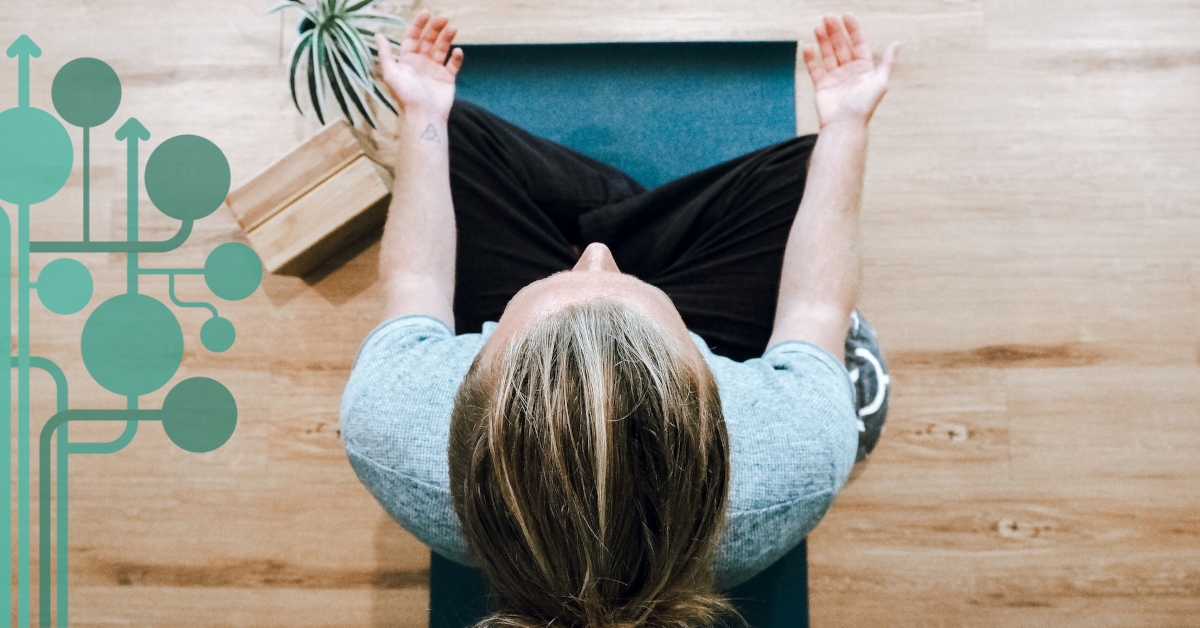What Is Somatic Yoga?
Somatic Yoga is a transformative movement therapy that merges traditional yoga postures with mindfulness and sensory awareness. Unlike conventional yoga, which often prioritizes external alignment and achieving specific poses, somatic yoga places a stronger emphasis on internal awareness and sensations. It invites practitioners to explore and understand how their bodies move from within.

A Brief History of Somatics
Let’s delve into the roots of this practice. Somatics, derived from the Greek word “soma” (meaning living body), was pioneered by Thomas Hanna in the 1970s. Hanna believed that stress and trauma trigger specific muscular reflexes, leading to involuntary contractions and habitual movement patterns that cause stiffness and pain. Over time, these contractions can result in sensory-motor amnesia (SMA), disconnecting us from our muscles’ sensations and control. Somatic Therapy aims to “unlearn” these patterns experientially, fostering a deep awareness of the body1.
Embodied Yoga: Where Somatics and Yoga Converge
In my practice, I refer to this fusion as “Embodied Yoga.” Here’s how it works:
- Slow Movements and Minimal Alignment Cues: Somatic yoga encourages deliberate, slow movements. Rather than fixating on external form, practitioners explore their bodies’ internal landscape. It’s not about achieving the “perfect” pose; it’s about feeling and listening to your body.
- Rediscovering Disconnected Parts: Embodied yoga invites you to reconnect with body parts you may have ignored or forgotten. By paying attention to internal sensations, you soothe your nervous system and enhance mental well-being.
- Curiosity and Self-Exploration: Imagine moving to the rhythm of your own drumbeat. You release stagnant emotions, energy, and tension. As you explore, buried desires and needs resurface, leaving you centered and aligned.
- Beyond External Alignment: Traditional yoga often emphasizes external alignment. In contrast, embodied yoga encourages transformation from within. It’s not just about physical postures; it’s about inner discovery.
Making Your Practice Somatic
Here are some simple somatic exercises to infuse into your yoga practice:
- Verbalize Feelings: Before starting, say a feeling word aloud. Tune in to your internal state.
- Touch Your Body: As you move through poses, touch your body—stroke your thighs, feel your skin against the mat. Sensation matters.
- Breathe with Awareness: Instead of mechanically breathing, become aware of your breath. Explore different lung areas and notice how they connect to your brain.
- Integrate Movement and Breath: Let your lung move your hand and vice versa. Sense the interconnectedness of organs and limbs.
Remember, somatic yoga isn’t about rigid rules; it’s about self-discovery. So, step onto your mat, breathe, and listen to the wisdom within.
Forearm Balance (Pincha Mayurasana)
Description: In this advanced yoga pose, the practitioner balances on their forearms, creating an inverted position. Here are the key points:
- Starting Position:
- Begin in a dolphin pose (similar to downward-facing dog, but with forearms on the ground).
- Elbows should be directly under the shoulders.
- Interlace the fingers, creating a stable base.
- Lift the Hips:
- Engage the core and lift the hips upward.
- Press through the forearms and shoulders.
- Legs remain extended, forming an inverted “V” shape.
- Leg Variation:
- One leg remains straight, reaching toward the ceiling.
- The other leg is bent at the knee, with the foot flexed.
- Balance and find stability.
- Alignment and Awareness:
- Keep the neck relaxed and gaze forward.
- Engage the core muscles to maintain balance.
- Breathe deeply and mindfully.
- Benefits:
- Strengthens the core, shoulders, and arms.
- Improves balance and focus.
- Enhances body awareness and mind-body connection.
- Contraindications:
- Avoid if you have wrist, shoulder, or neck injuries.
- Practice under the guidance of an experienced teacher.












